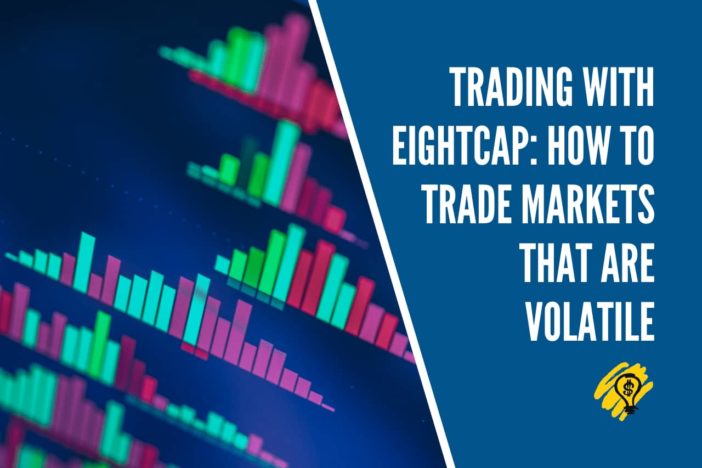What does Forex actually mean?
Most new traders or investors have come across the term “FX” or “Forex” and have wondered what the term stands for. FX is simply an abbreviation of Foreign Exchange (with Forex obviously being a slightly longer amalgamation of the two words).
The FX market is one of the biggest and most liquid markets in the world, with a huge $6.6 trillion in asset volume traded daily. Because of the global nature of the FX market, it is generally open 24 hours a day and thus often referred to as the “market that never sleeps.”
There are more trades placed on Forex markets and exchanges around the world than on any other asset and this creates deep pools of liquidity and both risk and opportunity for traders or investors to speculate on rising and falling prices.
When looking at FX prices, you’ll notice that they’re quoted in pairs. This is because trading Forex involves exchanging one currency for another. For example, if trading Pounds (£) and US dollars ($), the price will be listed as GBP/USD and shows at a glance the comparative strength of each currency against the other. The market will determine the value of a currency pair. In layman’s terms, this is referred to as the exchange rate; the rate at which you can exchange one currency for another.
The strength of one currency may rise or fall in relation to another based on a number of geopolitical, central bank, and inflation influences as traders and investors react to events. These fluctuations in price represent volatility and offer traders both risk and opportunity.
There is a wide range of currency or FX pairs that traders can speculate on and some of the world’s most heavily traded pairs tend to be associated with major economies like those of the US, European Union, and Japan. These pairs are heavily traded every day and include:
- EUR/USD (Euro/US Dollar)
- USD/JPY (US Dollar/Japanese Yen)
- GBP/USD (British Pound/US Dollar)
- USD/CHF (US Dollar/ Swiss franc)
Pairs that are slightly less popular but still represent significant trading volumes include those of other major economies like Australia, Canada, and New Zealand. These pairs include:
- AUD/USD (Australian Dollar/US Dollar)
- USD/CAD (US Dollar/ Canadian Dollar)
- NZD/USD (New Zealand Dollar/US Dollar
How many FX markets are there?
There are hundreds of potential FX markets around the world. The so-called major FX pairs above are a relatively small selection of the total available markets. There are also a huge array of less well-known currency pairs which include the currencies of comparatively less well-known economies like those of Turkey, Mexico, and South Africa.
These more exotic and less traded FX pairs include:
- AUD/NOK (Australian Dollar/Norwegian Krone)
- AUD/PLN (Australian Dollar/Polish Zloty)
- AUD/SEK (Australian Dollar/Swedish Krona)
- AUD/SGD (Australian Dollar/Singapore Dollar)
- CAD/SGD (Canadian Dollar/Singapore Dollar)
- CHF/SEK (Swiss Franc/Swedish Krona)
- CHF/SGD (Swiss Franc/Singapore Dollar)
- EUR/CZK (Euro/Czech Republic Koruna)
- EUR/NOK (Euro/Norwegian Krone)
- EUR/PLN (Euro/Polish Zloty)
- EUR/RUB (Euro/Russian Ruble)
- EUR/SEK (Euro/Swedish Krona)
- EUR/SGD Singapore Dollar)
- EUR/TRY (Euro/Turkish Lira)
- EUR/ZAR (Euro/South Africa Rand)
- GBP/CZK (British Pound/Czech Republic Koruna)
- GBP/MXN (British Pound/Mexican Peso)
- GBP/NOK (British Pound/Norwegian Krone)
- GBP/PLN (British Pound/Polish Zloty)
- GBP/SEK (British Pound/Swedish Krona)
- GBP/SGD (British Pound/Singapore Dollar)
- GBP/TRY (British Pound/Turkish Lira)
- MXN/JPY (Mexican Peso/Japanese Yen)
- NOK/JPY (Norwegian Krone/Japanese Yen)
- SGD/JPY (Singapore Dollar/Japanese Yen)
- TRY/JPY (Turkish Lira/Japanese Yen)
- USD/CZK (US Dollar/Czech Republic Koruna)
- USD/HUF (US Dollar/ Hungarian Forint)
- USD/ILS (US Dollar/Israeli Shekel)
- USD/MXN (US Dollar/Mexican Peso)
- USD/NOK (US Dollar/Norwegian Krone)
- USD/PLN (US Dollar/Polish Zloty)
- USD/RON (US Dollar/Romanian Leu)
- USD/RUB (US Dollar/Russian Ruble)
- USD/SEK (US Dollar/Swedish Krona)
- USD/SGD (US Dollar/Singapore Dollar)
- USD/TRY (US Dollar/Turkish Lira)
- USD/ZAR (US Dollar/South Africa Rand)
- ZAR/JPY (South Africa Rand/Japanese Yen)
One of the biggest reasons FX trading is so popular is precisely for this reason, the huge array of available markets, in addition to the deep liquidity and regular volatility mean that there are plenty of trading opportunities for investors and traders.
In addition, when trading FX with a CFD account, traders can take both Long (Buy) or Sell (Short) positions to profit from both rising and falling markets.
But remember, trading FX is like trading any other financial instrument, you can lose your investment if the market turns against you. It is important that you understand the market you want to trade – as well as the factors that influence market movements – before opening a trading position.
Once you have a solid understanding of the factors influencing market movement, aligned to a responsible trading plan, you can begin speculating on market movement with a CFD trading account. This allows you to trade on the underlying market rather than owning actual currency and is one of the most flexible ways to trade online.
As mentioned, the FX market is the world’s biggest by traded volume, so there is plenty of information out there to help you learn. Most traders subscribe to newsletters and updates from trusted sources like Bloomberg, the Financial Times, or Reuters to help guide their trading decisions and ideas. This can be an excellent way to deepen your understanding of the market and to get a wider market context around how and why the price of a particular FX pair may change.
Research is a critical part of being an FX trader and can make the difference between a poorly thought-out trading strategy and one underpinned with a solid direction and data-backed decisions.
What are FX Spot markets?
As the name implies, Spot FX is when traders take an FX position “on the spot,” and the exchange of assets happens immediately as a trade is concluded. One of the biggest reasons investors or traders may choose Spot FX is that it allows them to trade in either direction (Both Buy/Sell positions).
Spot FX generally tends to have a tighter spread (the difference between Buy/Sell prices) and so potentially offers greater value to traders as the market doesn’t need to move too far to put a position in potentially profit-driven territory. Traders interested in Spot FX need a deep technical understanding of both charts and technical trading strategies. The market is primarily driven by aggressive technical traders who buy and sell quickly, meaning the market action can be fast and volatile with a higher potential for risk.
Understanding what FX Forwards and FX Futures Markets are
FX Forwards and Futures markets are different from regular FX trading in that they operate on a contract-for-difference basis that acts as a promise between two parties to trade a specific FX pair at a predetermined price on a chosen expiry date in the future.
FX Forwards and FX Futures markets are generally more complex financial instruments and require more advanced market knowledge and a talent for spotting technical trade patterns and market trends. This makes them more suited to established traders than new FX traders, and they are sometimes used by high-volume traders as a hedge to cover potential volatility on existing open positions. There is no overnight financing on the Futures and Forwards markets, but they can be more expensive and generally have a wider spread than regular FX markets.
Why might traders choose to trade FX markets?
There are a number of reasons that FX traders whose Forex markets, one of the biggest being the wide selection of available currency pairs and the high level of flexibility in choosing which market to trade. Many investors use FX as a way to add variety to their trading portfolio or as a hedge on existing positions on other financial assets.
Another key reason FX traders choose Forex is the relatively tight spreads, especially on major FX pairs. A tighter spread means that the market need not move dramatically before a position can become profitable (but remember the opposite is also true, and tighter spreads can see your position lose value).
Of course, with a CFD trading account, FX traders also have the option of opening both a Long and Short position and so have more trading opportunities on both rising and falling markets.
FX markets are also relatively easy to understand and because Forex markets are the world’s biggest, there is a substantial amount of information available to investors, making it simple to stay informed of market movements. Like any investment, it is important to understand how things like Central Bank decisions, geopolitical factors, inflation, and interest rates may affect market movement and volatility in your chosen currency pair.
Are Forex Markets Volatile?
Forex markets can be highly volatile and are impacted by a wide range of interconnected factors. This volatility presents both risk and opportunity for traders and makes it critical that you understand how and why currency pairs react to certain types of financial events.
FX pairs can be impacted by other asset classes too, including Indices and Commodities, so market research when trading forex is especially important. Major news events like election wins, referendums, wars, and natural disasters can also impact market confidence and, therefore, volatility causing markets to rise and fall faster than normal.
While all of these spikes represent potential opportunity, they also represent risk. Having a trading plan in place and doing your market research can minimize trading risk while enabling you to take advantage of key trading opportunities.
Best Platforms for Forex trading
There are a huge array of platforms available for traders online. Finding the right one for you depends on whether you’re a more technical trader and interested in charts or trading around events and changing market sentiment. Trading FX with Eightcap is simple, and the platform has over 40 FX pairs to choose from and tight spreads from 0.0 pips. At Eightcap, traders can trade on the powerful MT5 platform or choose the WebTrader platform for easy access. With advanced charts and regular market insight and analysis, Eightcap is a strong choice for both established FX traders and those new to the market.



